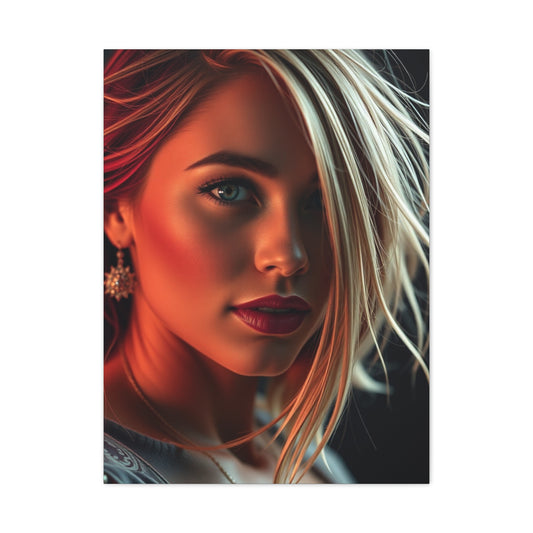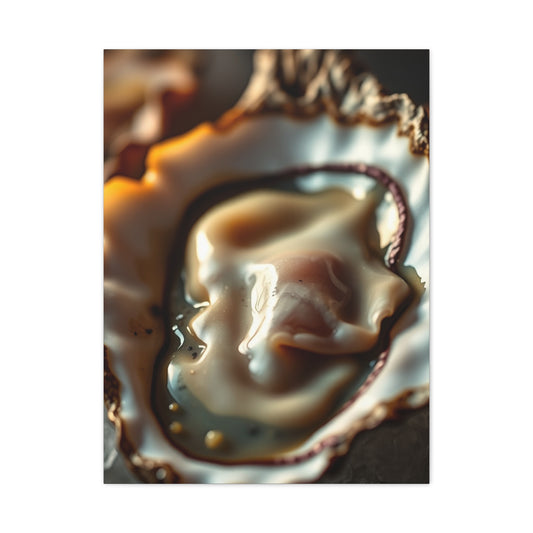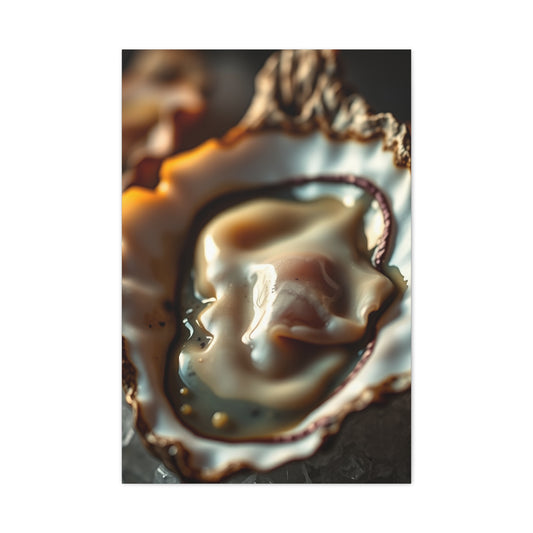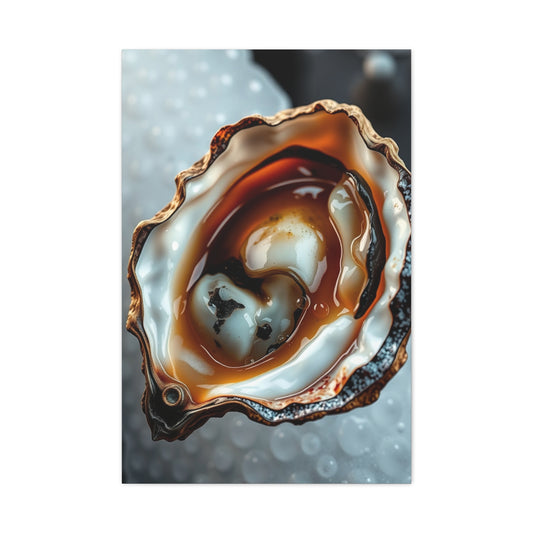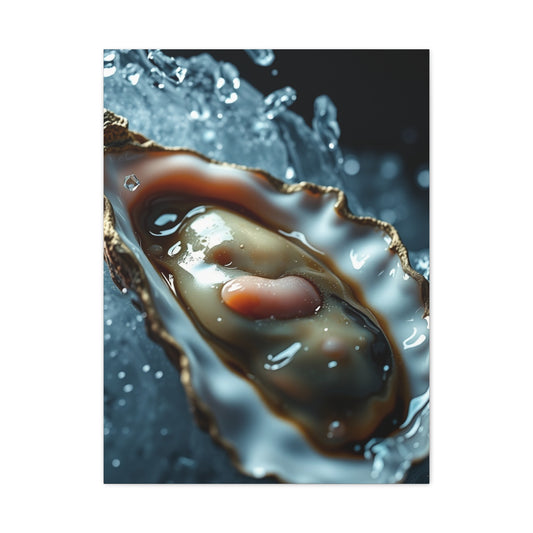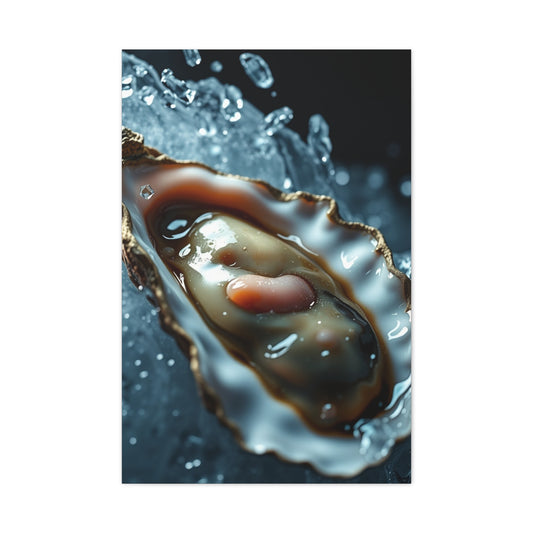Painting the exterior of your home is more than just adding colour to walls. It is an opportunity to create a visual identity that reflects your personality, complements the architecture, and harmonizes with the surrounding environment. A thoughtfully selected colour palette can instantly enhance curb appeal, convey warmth, elegance, or modernity, and even influence the mood of those who see it. Exterior paint interacts with natural light, landscaping, and architectural features such as roofs, windows, doors, and porches. Therefore, the choice of colours should consider not only personal taste but also environmental factors, climate, and regional aesthetics.
The first impression of a home begins with its exterior. When visitors or passersby approach your property, they subconsciously evaluate the design, balance, and cohesiveness of colours. This makes the exterior paint an essential aspect of home design. Successful colour combinations can make the home appear larger, more inviting, and visually balanced. Conversely, poorly chosen colours can make even a beautiful house appear cluttered or unappealing. The process of choosing exterior colours often involves understanding colour psychology, natural surroundings, architectural style, and durability of paint finishes suitable for outdoor conditions.
A Twist of Blue and Grey: Classic Colour Combination for House Exterior Painting
The combination of blue and grey has become a classic choice for contemporary homes. This pairing offers both elegance and subtlety while maintaining a modern aesthetic. White is often used as a base colour, creating a clean and cooling effect, especially suitable for tropical climates. The shades of white can vary, from warm whites with grey undertones to bright, pearly whites, each giving a slightly different visual impression. Incorporating blue elements, such as shutters, window frames, or doors, introduces a calming and soothing quality to the exterior. Grey tones, on the other hand, provide balance and sophistication, especially when integrated into cladding, roofing, or other architectural features.
A house painted in white with accents of blue and grey can feel both inviting and minimalist. Blue is particularly effective in providing visual contrast against a predominantly white façade, while grey complements both shades and adds a grounding effect. Brown or wooden elements can be added for texture and warmth, for instance through brick cladding or wooden panels. This colour combination is highly versatile and works exceptionally well for modern architecture, minimalist designs, and homes with clean geometric lines. It is also adaptable to both small and large properties, enhancing visual depth without overwhelming the senses.
The interaction between blue, grey, and white creates a balanced and harmonious visual experience. Light blue shades can evoke tranquility, while deeper blues can add depth and character. Grey shades provide a neutral counterpoint, ensuring the overall aesthetic remains timeless rather than trendy. Homeowners can experiment with different textures and finishes, such as matte, satin, or glossy, to enhance the visual appeal of these colours. By combining these shades thoughtfully, the home’s exterior exudes elegance, sophistication, and a modern charm that stands out in any neighbourhood.
Terracotta Crush Colour Combination for House Exterior Painting
Terracotta is a warm, earthy colour that brings a natural, homey feel to the exterior of a house. This colour evokes the texture of clay and stone, blending seamlessly with gardens, lawns, and natural surroundings. A terracotta base paired with soft white accents can highlight architectural details, create visual interest, and enhance the overall warmth of the property. Roof shingles, window frames, and other exterior features can be coordinated with the terracotta hue, creating a cohesive and inviting appearance.
This colour combination works particularly well for bungalows, colonial-style houses, and traditional designs. Terracotta lends a sense of groundedness and comfort, making the property feel welcoming and homely. White accents, on the other hand, prevent the design from appearing monotonous, adding crispness and clarity to the overall visual composition. The interplay between these two colours creates a balanced, mellow, and aesthetically pleasing exterior that blends seamlessly with greenery or landscaped surroundings.
The versatility of terracotta allows it to adapt to both rustic and contemporary styles. Homeowners can use variations of terracotta, from light peachy tones to deeper reddish hues, depending on the desired impact. Combining terracotta with muted whites, creams, or beige can soften the visual effect, while pairing it with darker shades can create a striking contrast. This approach allows each house to maintain its individuality while adhering to harmonious exterior design principles. When executed correctly, terracotta-based colour schemes offer timeless appeal, warmth, and a sense of rooted elegance.
Very Peri Colour Combination for House Exterior Painting
Very Peri, Pantone’s Colour of the Year 2022, introduces a vibrant yet versatile option for home exteriors. This colour blends purple and blue undertones, creating a lively and contemporary visual statement. Very Peri can be used in combination with neutral shades such as white, grey, or brown, balancing vibrancy with sophistication. Two-toned applications of Very Peri, with lighter and darker shades highlighting different areas of the house, can enhance architectural features and add dimensionality to the exterior.
This colour combination is particularly suitable for modern homes, townhouses, or urban residences. The bright and playful aspect of Very Peri attracts attention while remaining refined when combined with neutral tones. White or cream accents can soften the boldness of the primary shade, while brown or grey elements provide grounding and contrast. Very Peri also complements natural materials such as wood and stone, making it adaptable for a variety of settings and architectural designs.
Using Very Peri on exteriors allows homeowners to showcase creativity without overwhelming the property. The colour works well on walls, doors, shutters, and even roofing elements, depending on the scale of application. This palette can also harmonize with landscaping elements, such as flowering plants or green lawns, further enhancing the overall visual effect. For homeowners seeking a contemporary and expressive exterior, Very Peri offers a unique opportunity to stand out while maintaining balance, sophistication, and visual cohesion.
Turquoise Blue and White: Ideal Colour Combination for Small Homes
Turquoise blue is a refreshing and calming colour that brings energy and serenity to a home exterior. When paired with white, it creates a striking, clean contrast suitable for bungalow-style houses or cottages. This combination evokes the tranquillity of water and the sky, producing a visually soothing effect that uplifts the appearance of the property. White highlights on doors, windows, and trims enhance the vibrancy of turquoise, ensuring a crisp and balanced look.
This pairing is particularly effective for smaller homes, as the lighter shades can make the property appear more spacious and inviting. Turquoise can be applied to the main walls, while white can define edges, borders, or smaller architectural details. This combination works well in tropical or coastal environments where natural light enhances the brightness and freshness of the colours. Roof materials, landscaping, and exterior furniture can further complement this palette, creating a cohesive and visually appealing design.
The Turquoise Blue and White combination balances liveliness with simplicity. The blue tones evoke a sense of calm and relaxation, while white provides clarity and balance. This pairing is ideal for homeowners who want a home exterior that feels modern, cheerful, and welcoming without appearing loud or overwhelming. The combination also offers versatility, as different shades of blue and variations in white can produce either a soft or vibrant effect, allowing each home to retain a unique identity while maintaining harmony with the surroundings.
Yellow and Grey Colour Combination for House Exterior Painting
Yellow is a vibrant and cheerful colour that immediately conveys positivity and warmth. It has a unique ability to make a home appear inviting and lively, while grey acts as a neutral stabilizer, balancing the brightness of yellow with sophistication and subtlety. When combined, these two colours create a visually engaging exterior that captures attention without feeling overpowering. Choosing the right shades of yellow is crucial, as bright tones can be energizing, while mustard or ochre shades provide warmth and richness. Grey, on the other hand, can range from light silver tones to deeper slate shades, allowing homeowners to experiment with varying degrees of contrast.
This colour combination is particularly effective for modern homes, bungalows, and townhouses. A yellow façade with grey accents on the roof, window frames, or door trims can create a harmonious balance between vibrancy and neutrality. White can also be incorporated subtly on windows or pillars to provide a crisp finish, though using white extensively on the roof in sunny regions may appear too stark. By thoughtfully combining yellow and grey, homeowners can achieve a stylish, contemporary look that radiates energy while remaining elegant. Landscaping elements, such as green lawns, shrubs, or flower beds, complement this palette beautifully, enhancing the overall charm of the property.
The psychology behind yellow and grey also plays a role in its popularity. Yellow stimulates feelings of happiness and optimism, which can positively influence the mood of those approaching the home. Grey, in contrast, brings calmness and stability, ensuring the exterior does not feel chaotic or overly bold. This balance makes yellow and grey a versatile combination, suitable for suburban neighborhoods, urban settings, and areas where a cheerful yet refined presence is desired. Various finishes, such as matte, satin, or textured paints, can further enhance the interplay between these two colours, adding depth and dimension to the exterior surfaces.
Red and Stone White Colour Combination for House Exterior Painting
Red is a strong, warm colour that symbolizes energy, passion, and vibrancy. When paired with stone white, it creates a subtle yet striking combination that blends boldness with serenity. This pairing works well for small homes, cottages, and nature-inspired settings where harmony with the surrounding environment is essential. The stone white provides a calming, neutral backdrop, allowing the red elements, such as walls, accents, or doors, to stand out without being overwhelming. Roof shingles and garage doors can be coordinated with darker browns or muted reds to maintain cohesiveness and enhance the natural aesthetic.
This colour combination conveys a sustainable, grounded feel, often associated with homes in suburban or rural areas. Clay red shades, reminiscent of traditional clay tiles or bricks, complement the earthy, neutral tones of stone white, producing an overall soothing effect. Architectural features such as porches, window frames, and pillars can be highlighted using the white accents to provide visual clarity and structure. This approach ensures that the exterior remains visually appealing, balanced, and timeless. Homeowners can also experiment with textures, such as brickwork, stone cladding, or wooden panels, to further enhance the depth and interest of the façade.
Red and stone white combinations also work effectively with landscaping elements. Greenery, flowering plants, and garden features contrast beautifully against the warm red and neutral white palette, emphasizing the home’s integration with nature. The versatility of red allows for variations in shade, from deep burgundy to muted terracotta, enabling homeowners to achieve different levels of intensity and mood. This combination is ideal for those seeking a classic yet modern exterior, exuding warmth, elegance, and a harmonious connection with the natural surroundings.
Olive Green and Brown Colour Combination for House Exterior Painting
Olive green is a sophisticated and calming colour that blends seamlessly with natural landscapes. When paired with brown, it creates an earthy, grounded aesthetic that complements suburban and rural homes surrounded by greenery. This colour palette is ideal for craftsman-style houses, bungalows, and properties designed to harmonize with their natural environment. Olive green provides a serene, restful quality, while brown elements such as roof shingles, wooden doors, or window frames add texture and warmth. White can be incorporated sparingly in doors or window trims to brighten the overall appearance without disrupting the earthy balance.
The olive green and brown combination emphasizes harmony with nature, making it an excellent choice for homes located near forests, parks, or gardens. The colours convey a sense of calm and stability, reflecting the natural environment while enhancing the home’s architectural features. Different shades of olive green, from muted sage to deeper forest green, can be used to create visual interest and variation, while brown tones can range from light caramel to deep chocolate, adding richness and depth. This flexibility allows homeowners to tailor the palette to their personal style and the surrounding landscape.
In addition to aesthetic appeal, the olive green and brown combination is practical in maintaining the exterior over time. Earthy tones are less prone to showing dust, dirt, or minor wear, making maintenance easier and keeping the home looking fresh for longer periods. Landscaping and garden elements further enhance this palette, as green lawns, trees, and shrubs naturally complement the earthy tones. Overall, the combination of olive green and brown achieves a sophisticated, tranquil, and visually appealing exterior, creating a home that is inviting, balanced, and in tune with its surroundings.
Pink and Dark Grey Colour Combination for House Exterior Painting
Pink is often considered a playful and vibrant colour, and when combined with dark grey and white accents, it can transform a small house into a stylish and striking property. This colour palette is suitable for cottages, townhouses, and homes where individuality and charm are desired. The pink elements bring brightness and energy, while dark grey on roofs, trims, or accent walls adds sophistication and balance. White can be used for window frames, doors, or other detailing to provide contrast and clarity, enhancing the overall appeal.
The key to using pink effectively on exteriors is balance. Overuse can overwhelm the design, but strategic application alongside neutral shades ensures harmony and elegance. Lighter pinks paired with soft greys create a subtle, contemporary look, while brighter pinks with dark grey accents provide a more dramatic and expressive effect. This colour combination is ideal for homeowners who want to stand out while maintaining a cohesive and tasteful appearance. Landscaping and outdoor furniture can further enhance the palette, introducing complementary colours and textures that enrich the overall visual experience.
Pink and dark grey also offer versatility in design. Different architectural features can be highlighted using variations of these shades, adding depth and character to the home. For example, a pink façade combined with a dark grey roof and white window frames creates visual layers that draw attention to the house’s unique design elements. This approach allows homeowners to express personality, creativity, and style while ensuring the exterior remains inviting, cohesive, and aesthetically pleasing.
Blend of Blue, Grey, White, and Red for House Exterior Painting
Combining multiple colours can create a dynamic and visually engaging exterior when done thoughtfully. A blend of blue, grey, white, and red provides a layered, vibrant look that enhances architectural features while maintaining balance. Blue serves as the primary colour, offering serenity and depth, while grey and white provide neutrality and contrast. Red acts as an accent, highlighting doors, shutters, or other key elements, adding energy and focal points to the exterior design.
This combination is particularly effective for modern cottages, townhouses, or homes with varied architectural features. Using two tones of blue can create a two-dimensional effect, breaking monotony and adding visual interest. Grey and white elements define borders, frames, and structural features, ensuring clarity and cohesion. Red accents add a lively twist, drawing attention to specific parts of the house without overwhelming the overall design. This careful interplay of colours allows homeowners to achieve a harmonious yet vibrant exterior that stands out in any neighborhood.
The blend of blue, grey, white, and red also allows for creativity in texture and finish. Matte and satin finishes can enhance depth and contrast, while glossy elements can add brightness and highlight focal points. Landscaping, garden features, and exterior furnishings can complement the palette, ensuring the home is visually integrated with its surroundings. This approach is ideal for homeowners seeking a contemporary, playful, and sophisticated exterior that reflects personality, style, and attention to detail.
Cream and Brown Colour Combination for House Exterior Painting
The cream and brown colour combination is a timeless choice that exudes elegance, warmth, and subtle sophistication. Cream provides a soft, calming base that brightens the exterior and gives a sense of spaciousness. Brown, when used for accents such as window frames, doors, roofing, or cladding, adds depth, grounding, and a natural feel to the home. This combination is particularly suitable for independent homes, villas, and properties where a neutral and refined appearance is desired. The subtlety of cream allows the architectural features of the house to stand out without overwhelming the eye, while brown complements the natural surroundings and creates a harmonious visual balance.
Cream shades can vary from warm beige tones to lighter off-white hues, each providing a different level of warmth and brightness. The choice of brown can range from light tan to deep chocolate, allowing homeowners to create contrasts or maintain a gentle harmony depending on their preference. This combination is versatile enough to suit both traditional and modern architectural styles. Cream acts as a canvas for the exterior, allowing landscaping elements, such as green lawns, trees, and flower beds, to complement the design. Brown accents emphasize structural details, such as rooflines, porches, and window frames, highlighting the craftsmanship and architectural intent of the home.
In addition to aesthetic appeal, cream and brown are practical choices for exterior painting. Cream reflects sunlight, helping to keep the home cooler in warm climates, while brown can effectively hide dirt or minor wear, maintaining a fresh appearance over time. Textured finishes, such as stucco, stone, or wood paneling, further enhance the visual richness of this palette. This combination can also be paired with muted greens, terracotta, or soft grays to introduce subtle variations and accentuate the natural elegance of the property. Overall, cream and brown create an inviting, sophisticated, and balanced exterior that is timeless in style.
Choosing Colours Based on Architectural Style
Selecting the right exterior colour combination requires careful consideration of the home’s architectural style. Modern homes with clean lines and geometric forms often benefit from neutral bases with bold accents, such as blue, grey, or Very Peri. The simplicity of the architecture allows colour to become a defining feature, creating visual interest without overwhelming the design. Minimalist houses can effectively use two-tone combinations, where one primary colour covers most of the exterior while a secondary colour highlights specific elements like window trims, doors, or cladding.
Traditional or colonial-style homes often look best with warm, earthy tones such as terracotta, olive green, or red combined with neutral shades like cream, white, or stone white. These colours evoke a sense of history, permanence, and comfort, harmonizing with natural materials such as wood and stone. The use of subtle contrasts between primary and secondary colours can accentuate architectural features, such as pillars, porches, and rooflines, adding depth and visual interest. Careful selection ensures that the home complements its surroundings while maintaining its unique character.
Craftsman-style homes benefit from colour combinations that integrate with the natural landscape. Olive green, brown, and muted tones allow the house to blend seamlessly with trees, gardens, and lawns, creating a cohesive and peaceful environment. Accent colours like white or light cream can brighten features such as window frames, doors, and porches, maintaining a balanced and inviting aesthetic. Similarly, cottage-style homes lend themselves to playful and vibrant combinations, such as turquoise blue and white or pink and dark grey, which enhance the charm and personality of smaller properties while highlighting architectural details.
The Role of Roof, Doors, and Window Frames in Exterior Colour Schemes
The roof, doors, and window frames play a significant role in enhancing or balancing the chosen exterior colour palette. Roof colours should complement the walls, either by providing subtle contrast or reinforcing the main colour. For example, a house with a cream exterior may benefit from brown shingles, while a blue façade can be paired with dark grey or slate roofs. Roof colour affects the overall perception of height, size, and prominence of the house, making it a key factor in exterior design.
Doors offer an opportunity to introduce accent colours and focal points. Red doors on neutral or blue exteriors provide energy and visual interest, while wooden or brown doors enhance the natural, earthy appeal of cream, terracotta, or olive green walls. Window frames also contribute to the aesthetic balance. White or light frames can highlight architectural features and provide crisp contrasts, while darker frames blend harmoniously with earthy or muted tones, creating a cohesive appearance. Thoughtful coordination of these elements ensures a polished and visually balanced exterior.
Architectural details such as porches, balconies, and columns also respond to colour choices. Highlighting these features with secondary shades or complementary accents can enhance depth, emphasize craftsmanship, and prevent monotony. The interplay between main wall colours, accent tones, and architectural elements results in an exterior that feels layered, dynamic, and harmonious. This approach ensures that every aspect of the house contributes to the overall visual impact, creating a cohesive and appealing presence in the neighborhood.
Environmental Considerations in Colour Selection
The surrounding environment significantly influences the effectiveness of exterior colour combinations. Homes located in tropical or sunny regions benefit from lighter shades, such as cream, white, or soft pastel tones, which reflect sunlight and keep interiors cooler. In contrast, homes in cooler or cloudy climates can use deeper and warmer tones like red, brown, or terracotta to provide warmth and visual richness. The integration of landscaping, natural light, and environmental context ensures that the chosen colours complement the overall setting and enhance the aesthetic appeal.
Environmental harmony also extends to urban or suburban areas where houses are in close proximity. Colour choices should balance individuality with cohesion, ensuring that the home stands out without clashing with neighboring properties. Using neutral bases combined with selective accents allows homeowners to express creativity while maintaining neighborhood aesthetics. Natural surroundings, such as trees, lawns, and gardens, can guide the choice of colours, with earthy tones blending seamlessly and vibrant shades providing contrast. This holistic approach ensures that the home exterior is visually appealing, contextually appropriate, and environmentally harmonious.
Maintenance and durability are additional environmental considerations. Lighter colours may show dirt or fading more quickly, while darker shades can absorb heat and affect indoor temperatures. Choosing high-quality exterior paints with UV protection, weather resistance, and longevity ensures that the colours remain vibrant over time. Regular upkeep, including cleaning, touch-ups, and occasional repainting, maintains the visual appeal and extends the lifespan of the exterior colour scheme.
Trends and Timeless Choices in Exterior Colour Palettes
Exterior colour trends evolve over time, influenced by design innovations, cultural preferences, and global colour forecasts. Current trends include the use of Pantone’s Very Peri, vibrant blues, muted pastels, and earthy neutrals. Combining modern trends with timeless classics, such as cream and brown or blue and grey, allows homeowners to achieve a contemporary look without compromising longevity. While bold or playful colours add personality, neutral bases ensure that the home remains appealing for years to come and retains value in the real estate market.
Homeowners can experiment with two-tone or multi-colour combinations to enhance architectural features, add depth, and create visual interest. Accent colours can be applied to doors, shutters, window frames, and structural elements to break monotony and highlight design elements. Balancing vibrancy with subtlety ensures a cohesive and sophisticated appearance. Additionally, integrating textures, such as stone, brick, wood, or stucco, can complement colour choices and provide a tactile, layered effect that elevates the exterior design.
Understanding the Psychology of Exterior Colours
The colours chosen for a home’s exterior do more than enhance aesthetics; they also influence mood, perception, and the overall impression of the house. Colour psychology is an essential consideration when selecting exterior paint. Warm tones like yellow, red, and terracotta evoke energy, warmth, and approachability. They can make a home feel inviting and cheerful, encouraging a sense of comfort for both residents and visitors. Conversely, cooler tones such as blue, grey, and green impart calmness, serenity, and stability, creating a restful and balanced visual impression.
Neutral shades like cream, beige, white, and stone white offer versatility and timeless appeal. They act as a canvas, allowing accent colours to stand out while maintaining cohesion with the environment. Neutral bases also adapt well to natural lighting changes throughout the day, preserving a consistent and pleasant look. The interplay of primary, secondary, and accent colours should be considered carefully, as it impacts the overall perception of the home. Choosing colours that resonate with the intended mood and function of the property ensures both aesthetic appeal and emotional harmony.
Homeowners should also consider how colour interacts with architectural style. Modern, minimalist homes benefit from high-contrast combinations such as blue and grey or Very Peri with white accents, enhancing clean lines and geometric forms. Traditional or colonial homes lend themselves to warm and earthy palettes, where terracotta, olive green, or red paired with neutral shades accentuate timeless charm. Understanding colour psychology helps homeowners make informed decisions that complement architecture, environment, and personal taste, resulting in an exterior that is both visually pleasing and emotionally resonant.
Balancing Bold and Neutral Colours
Achieving harmony between bold and neutral colours is key to a visually appealing exterior. Bold colours, including red, turquoise, pink, or Very Peri, can serve as focal points, drawing attention to doors, shutters, or structural details. When balanced with neutral tones such as cream, white, grey, or stone white, these vibrant shades maintain their impact without overwhelming the design. A carefully curated balance ensures that the exterior is dynamic yet cohesive, striking the perfect equilibrium between energy and sophistication.
The scale and placement of bold colours are critical factors. Larger surfaces may benefit from muted or neutral tones to avoid visual fatigue, while smaller features like doors, trims, or accent walls can carry bold hues to create interest. Layering shades and tones within the same colour family can further refine the design, providing depth and texture. For example, combining lighter and darker variations of blue or Very Peri on walls, cladding, or architectural elements can create a subtle two-tone effect that enhances the overall aesthetic. Neutral colours act as stabilizers, ensuring the home retains a timeless appeal while accommodating contemporary trends.
Natural materials such as wood, stone, or brick work in tandem with colour combinations to reinforce balance and cohesion. Earthy tones like brown or olive green naturally complement vibrant shades, grounding the design and integrating the home with its surroundings. Landscaping elements, such as greenery, flowers, and outdoor furniture, can also harmonize with the exterior palette, creating a unified visual experience. The strategic use of bold and neutral colours, in combination with textures and natural elements, produces an exterior that is aesthetically pleasing, welcoming, and enduring.
Highlighting Architectural Features Through Colour
Colour can be a powerful tool to emphasize architectural features and enhance the visual interest of a home. Strategic application of accent colours draws attention to elements such as window frames, doors, porches, pillars, and rooflines. For instance, contrasting a bold door colour against a neutral wall draws the eye and establishes a focal point, while subtle variations in trim or siding colours highlight craftsmanship and detail. Layering colours thoughtfully can create depth and dimension, preventing the exterior from appearing flat or monotonous.
Different architectural styles respond uniquely to colour highlighting. Modern homes with minimalistic designs benefit from bold accent colours that emphasize geometric forms and clean lines. In contrast, traditional or colonial houses thrive on subtler contrasts and earthy palettes that complement structural features without overpowering the overall aesthetic. Cottage-style homes can embrace playful and unconventional combinations, such as pink with dark grey or turquoise with white, to enhance charm and individuality. The key is to use colour intentionally, ensuring that it accentuates rather than distracts from the design.
Materials and textures also influence how colours are perceived. Wooden elements absorb light differently from stone or brick surfaces, affecting the visual outcome of paint. For example, a cream façade with brown wooden accents appears warm and inviting, while a textured terracotta wall with white trim feels grounded and natural. Understanding the interplay between colour, texture, and architectural detail allows homeowners to maximize the aesthetic potential of their exterior, creating a home that is both visually appealing and structurally expressive.
Adapting Colour Schemes to Climate and Light
Environmental conditions, such as climate and natural lighting, play a crucial role in the success of exterior colour schemes. Bright sunlight can intensify vibrant colours, making them appear more saturated, while overcast or shaded areas may soften bold tones. Lighter colours such as cream, white, and pastel shades reflect sunlight, keeping interiors cooler in hot climates and maintaining brightness on exterior surfaces. Darker colours like brown, deep blue, or grey can absorb heat, providing warmth in cooler regions while adding richness and depth to the façade.
Seasonal changes also affect the perception of exterior colours. Warm tones such as yellow, terracotta, or red can appear more vivid in autumn, complementing foliage and natural surroundings. Cooler shades like blue or grey are enhanced by clear skies or diffused lighting, creating a serene and elegant effect. Homeowners should observe how light interacts with their home at different times of the day to ensure the chosen palette remains harmonious and visually appealing under varying conditions. This consideration helps prevent mismatched or jarring appearances and ensures the home maintains a consistent aesthetic throughout the year.
Using durable, weather-resistant paints is essential to preserve colour vibrancy and prevent fading over time. High-quality exterior paints with UV protection, water resistance, and long-lasting finishes ensure that the colours maintain their intended impact regardless of environmental exposure. Regular maintenance, including cleaning, touch-ups, and inspections, further prolongs the aesthetic and functional value of the exterior, allowing the home to retain its charm and appeal for years to come.
Integrating Landscaping and Outdoor Features
The exterior colour scheme should harmonize with landscaping and outdoor features, creating a cohesive and visually pleasing environment. Green lawns, trees, shrubs, and flowering plants naturally complement earthy tones such as olive green, terracotta, or brown, while vibrant shades like turquoise, red, or yellow provide contrast and energy. Paving, garden furniture, outdoor lighting, and decorative elements can also be coordinated with the exterior palette to reinforce cohesion and enhance the overall appeal.
Strategically placed accent colours can connect the house with the garden or outdoor spaces. For example, a red front door can echo the colour of seasonal flowers, while a cream or white façade provides a neutral backdrop that allows landscaping to stand out. The integration of natural and built elements ensures that the home feels part of its surroundings rather than isolated, creating a sense of unity and balance. Thoughtful coordination between exterior colours and outdoor features also enhances curb appeal, making the property more attractive and inviting to visitors.
Texture and material choices further strengthen the connection between the house and its environment. Wooden decks, stone pathways, brick patios, and textured walls can be harmonized with the exterior colour palette, providing depth and tactile interest. The combination of natural materials with carefully selected colours ensures that the home appears integrated, balanced, and aesthetically sophisticated. Landscaping, textures, and colour choices work together to create an inviting, harmonious, and visually engaging exterior that enhances the overall living experience.
Achieving a Timeless and Cohesive Exterior
A successful exterior colour scheme balances trendiness with timeless appeal, ensuring the home remains stylish and relevant over time. Classic combinations such as cream and brown, blue and grey, or red and stone white provide enduring elegance, while contemporary shades like Very Peri or turquoise offer opportunities for modern expression. Combining these approaches allows homeowners to create an exterior that feels current without sacrificing long-term value or aesthetic harmony.
Cohesion is achieved by maintaining a consistent colour story across walls, trim, roof, doors, and accents. Thoughtful coordination prevents dissonance and ensures that each element complements the others. Subtle layering of shades, textures, and finishes adds depth and interest without overwhelming the design. The integration of natural surroundings, architectural features, and outdoor elements further enhances the home’s overall impact, resulting in an exterior that is inviting, visually balanced, and memorable.
Exploring Multi-Tone Colour Combinations for Exterior Walls
Using multiple tones on a home’s exterior allows for depth, dimension, and dynamic visual appeal. Multi-tone colour schemes combine primary, secondary, and accent colours to create harmony while emphasizing architectural features. For instance, pairing two shades of the same colour, such as a lighter and darker blue, adds a layered effect that breaks monotony and enhances depth. Similarly, integrating contrasting shades, such as cream with brown or red with stone white, draws attention to key structural elements like columns, porches, and window trims. Multi-tone designs provide flexibility, enabling homeowners to highlight specific aspects of their home’s architecture without overwhelming the overall aesthetic.
The choice of multi-tone combinations should consider the scale of the house and the surrounding environment. Larger homes with expansive façades benefit from subtle variations within the same colour family to prevent visual fatigue, while smaller homes can use bolder contrasts on accent features to create focal points. Texture and material can further enhance the effect of multi-tone applications. Stone cladding, wooden panels, or textured plaster allow shades to interact with natural light, producing dynamic shadows and enhancing visual richness. By combining multiple tones thoughtfully, homeowners can create a balanced, striking exterior that conveys sophistication, depth, and individuality.
Enhancing Small Homes Through Colour Strategy
Small homes require strategic colour planning to appear more spacious and inviting. Light, cool tones such as cream, white, pastel blue, or turquoise visually expand walls and create a sense of openness. Combining these with subtle accents, such as darker trims, rooflines, or shutters, adds structure and definition without closing in the space. White is particularly effective in highlighting edges and corners, enhancing the perception of dimension and making small homes feel airy and balanced.
Colour placement is crucial for small properties. Primary colours should cover the main walls to provide a clean and expansive backdrop, while secondary and accent colours can be applied to doors, window frames, or porch elements to create interest. Multi-tone strategies, such as layering two shades of the same colour or integrating complementary neutrals, enhance depth without overwhelming the design. These approaches ensure that even compact homes maintain elegance, charm, and visual appeal. Landscaping can also support the colour scheme by adding natural contrast and texture, reinforcing the sense of space and harmony.
Additionally, reflective surfaces such as light-coloured pathways, outdoor tiles, and windows contribute to the perception of a larger property. Integrating these elements with a carefully chosen exterior colour palette ensures that the home feels cohesive, spacious, and welcoming. Small homes can successfully embrace bold accent colours in moderation, achieving vibrancy and personality while maintaining balance and sophistication.
Using Colour to Define Architectural Zones
Exterior colour can be used strategically to define different architectural zones within a property. Variations in colour can demarcate the main building, porch, garage, and upper-level balconies, providing clarity and enhancing the home’s structure. This approach allows homeowners to emphasize or downplay certain areas, guiding the eye naturally across the façade. For example, using a neutral base for the main walls with darker or contrasting accents on a porch or garage highlights these zones and creates a layered, organized look.
Defining architectural zones with colour also reinforces the design narrative of the home. Modern homes often employ subtle tonal variations to emphasize clean lines and geometric forms, while traditional or colonial homes may use contrasting shades to highlight details such as columns, trims, or shutters. Layering shades within a single colour family, such as light cream with tan accents or pastel blue with slate grey, allows for subtle differentiation without overwhelming the exterior. This technique strengthens the overall composition and gives each section of the house a distinct identity while maintaining harmony across the property.
Natural materials complement zone-based colour strategies. Wooden panels, stone cladding, and textured finishes interact with applied colours, creating depth and enhancing visual separation between zones. Thoughtful placement of accent colours can draw attention to entryways or focal points, adding both functionality and aesthetic appeal. By using colour to define architectural zones, homeowners can maximize the visual impact of their exterior design while maintaining cohesion and elegance.
Incorporating Trends Without Compromising Timelessness
While trends in exterior colours evolve, successful designs combine modern aesthetics with timeless appeal. Popular colours such as Very Peri, turquoise, mustard yellow, and soft pink offer opportunities for contemporary expression. Pairing these with classic neutrals like cream, white, grey, or brown ensures that the overall design remains elegant and enduring. The key is moderation; vibrant or trendy shades work best when used as accents or focal points rather than covering the entire façade.
Homeowners can integrate trends through doors, shutters, trims, or specific sections of the walls, leaving the majority of the home in neutral tones. This approach maintains flexibility, allowing the exterior to evolve over time without a complete repaint. Trendy colours paired with timeless bases also enhance curb appeal, making the home feel modern while retaining value and versatility. Multi-tone combinations, layering, and thoughtful accents ensure that contemporary palettes coexist seamlessly with classic choices, producing a cohesive and sophisticated exterior.
Lighting and environment also influence the perception of trendy colours. Bright, sunlit areas intensify vibrant shades, while shaded or reflective surfaces may soften their impact. Understanding how light interacts with chosen colours ensures that trends are applied effectively, maintaining balance and harmony. Combining current trends with established, timeless palettes allows homeowners to express individuality while creating an exterior that remains stylish and relevant for years to come.
Enhancing Natural Materials with Complementary Colours
Natural materials such as wood, stone, brick, and clay are frequently incorporated into exterior designs. These materials possess inherent textures and tones that interact with painted surfaces, enhancing visual interest and depth. Complementary colour choices can emphasize the natural beauty of these materials. For instance, terracotta walls with cream accents highlight the warmth and texture of the clay, while olive green combined with brown enhances wooden elements and integrates the home with its natural surroundings.
Using complementary colours with natural materials also strengthens harmony between the house and its environment. Landscaping elements such as green lawns, trees, shrubs, and flowering plants work with earthy tones and neutral bases to create a unified and aesthetically pleasing exterior. Accent colours can further highlight natural materials, drawing attention to unique textures or architectural details without appearing forced. This approach reinforces the connection between the built environment and nature, producing a balanced, visually rich, and inviting home exterior.
Material finishes influence the interaction with colour as well. Matte finishes soften vibrant shades, producing subtle elegance, while glossy or textured finishes enhance depth and light reflection. Combining these elements strategically allows homeowners to create a façade that feels layered, tactile, and visually dynamic. Colour choices that complement natural materials elevate the exterior design, ensuring the home is sophisticated, harmonious, and in tune with its surroundings.
Achieving Cohesion Between Interior and Exterior Design
A well-coordinated home maintains visual cohesion between its interior and exterior. Exterior colour choices can set expectations for interior aesthetics and create a seamless flow between spaces. Neutral bases such as cream, white, or grey provide continuity and flexibility, while accent colours like blue, red, or yellow can be echoed inside through furniture, décor, or feature walls. This integration enhances the overall sense of unity and contributes to a more refined and thoughtful design.
Interior elements such as flooring, furniture, wall finishes, and decorative accents can complement exterior colours, creating a consistent theme and reinforcing the home’s personality. For example, an exterior in earthy tones like olive green and brown may be paired with warm wooden flooring and muted interior walls, producing a cohesive and inviting environment. Bright exterior accents, such as turquoise or red, can find subtle reflections indoors, providing continuity without overwhelming the interior design. Achieving harmony between interior and exterior design ensures a holistic approach, resulting in a home that feels balanced, integrated, and visually coherent.
Lighting, both natural and artificial, plays a role in maintaining this cohesion. Exterior lighting can highlight architectural features, accent colours, and textures, while interior lighting ensures that the view from windows complements the exterior palette. By considering the interaction of colours across the home’s boundaries, homeowners can achieve a seamless and visually satisfying design, enhancing the overall appeal, comfort, and experience of the property.
Finishing Touches for Exterior Colour Schemes
The finishing touches in exterior painting are crucial for achieving a polished and sophisticated look. Small details, such as trims, moldings, shutters, and window frames, provide opportunities to accentuate the overall colour scheme. A well-executed accent on doors or a porch can transform the perception of a home, making it appear more vibrant and inviting. Colours for these details should complement the primary palette while creating subtle contrast. For instance, a cream façade can be enhanced with brown or dark grey trims, while a turquoise exterior can be complemented by crisp white shutters or door frames. The key is to apply finishing touches thoughtfully to highlight architectural features without overpowering the main colour scheme.
The choice of finishes also plays a role in the exterior’s final appearance. Matte finishes offer understated elegance, reducing glare and creating a soft, refined look. Satin and semi-gloss finishes enhance the vibrancy of accent colours and can add a subtle sheen, creating depth on textured surfaces. Glossy finishes, when used sparingly on details such as doors or window trims, can act as focal points, attracting attention to specific areas. Selecting appropriate finishes based on the architectural style, lighting conditions, and colour intensity ensures that the home maintains balance, sophistication, and visual interest.
Incorporating Lighting to Enhance Exterior Colours
Exterior lighting is essential for highlighting colour combinations and enhancing the home’s visual appeal after dark. The way light interacts with exterior paint can dramatically change its perception, making some colours appear warmer or cooler depending on the source and intensity. Warm lights, such as soft yellow or amber, can enhance earthy tones like terracotta, olive green, and brown, creating a cozy, inviting atmosphere. Cooler lights, such as white or blue-toned LEDs, can emphasize crisp colours like turquoise, white, or grey, enhancing the modernity and freshness of the exterior.
Placement of lighting also matters. Uplights at the base of walls or architectural features can draw attention to texture, shadow, and colour variations, creating dramatic effects. Downlights on porches, entrances, and pathways enhance safety while subtly highlighting the chosen palette. Accent lighting on doors or window trims can emphasize details and complement the overall colour scheme. Properly integrated exterior lighting ensures that the home remains visually appealing both day and night, reinforcing the impact of carefully selected colour combinations.
Seasonal Adaptation of Exterior Colours
Seasonal changes influence how exterior colours are perceived and can guide homeowners in colour selection. In sunny climates, lighter tones such as cream, white, or pastel shades reflect sunlight, reducing heat absorption while maintaining brightness. Darker shades like red, brown, or deep blue are more suitable for cooler climates, where they add warmth and richness. Understanding how seasonal variations affect colour perception ensures that the home maintains a consistent, aesthetically pleasing appearance throughout the year.
Landscaping elements also interact with seasonal changes. Green lawns, flowering plants, and trees highlight earthy tones, while bright or pastel colours in exterior paint complement seasonal blooms and foliage. A home painted in terracotta, cream, and brown may look warm and grounded during autumn, while turquoise or blue façades can appear refreshing in summer. Homeowners can use this understanding to plan colour combinations that remain visually harmonious across seasons, enhancing curb appeal and overall aesthetics.
Durable Paints and Maintenance Considerations
The longevity of exterior paint depends on the quality of materials and proper maintenance. High-quality, weather-resistant paints with UV protection prevent fading, chalking, and peeling, ensuring that colours retain their vibrancy over time. Moisture-resistant formulations protect the exterior from rain, humidity, and temperature fluctuations, which is particularly important in tropical or coastal regions. Selecting the right type of paint for walls, trims, and architectural details ensures durability and preserves the aesthetic integrity of the exterior.
Maintenance practices, including periodic cleaning, touch-ups, and inspections, are essential to maintain the appearance of exterior paint. Dirt, pollution, and mildew can diminish the vibrancy of colours, so regular cleaning ensures that the home retains its intended appeal. Touch-ups on doors, trims, and high-traffic areas prevent wear from becoming noticeable, maintaining cohesion in the overall design. By combining high-quality paints with consistent maintenance, homeowners can enjoy an exterior that remains vibrant, balanced, and visually striking for years.
Harmonizing Exterior Colours with Natural and Built Surroundings
A well-designed exterior colour scheme harmonizes with both natural and built surroundings. Natural elements such as trees, lawns, shrubs, and flowering plants should complement the primary and accent colours of the home. Earthy tones like terracotta, olive green, brown, and stone white integrate seamlessly with natural landscapes, while vibrant or cool shades like turquoise, Very Peri, or yellow can provide contrast and energy without disrupting harmony. Landscaping elements, pathways, garden furniture, and outdoor décor can be coordinated with the colour palette to create a unified and aesthetically pleasing environment.
The built environment, including neighbouring homes, streetscapes, and communal spaces, also influences colour selection. Coordinating exterior colours with the surrounding architecture ensures that the home stands out appropriately without clashing. Neutral bases with selective accents allow for individuality while maintaining cohesion with the broader environment. Achieving this balance between natural and built surroundings enhances curb appeal, creates visual harmony, and ensures that the property integrates seamlessly into its context.
Conclusion:
Selecting exterior colours involves a thoughtful balance of aesthetics, architecture, environment, and personal preference. Homeowners should evaluate how colours interact with architectural features, rooflines, doors, window frames, and landscaping to achieve a cohesive and visually appealing result. Considering colour psychology, light interaction, climate, seasonal changes, and maintenance requirements ensures that the chosen palette is both beautiful and functional. Multi-tone combinations, subtle accents, and strategic finishing touches provide depth, sophistication, and timeless elegance.
Testing colours on small areas of the façade before committing to the entire exterior is a practical approach. Observing the colours under different lighting conditions and during various times of the day allows homeowners to assess how shades interact and whether they achieve the desired effect. Consulting with design professionals or using virtual visualization tools can also aid in decision-making, ensuring that colour combinations harmonize with the home’s architecture, environment, and intended style.
Ultimately, a well-executed exterior colour scheme transforms a house into a home. Thoughtful selection, careful application, and consistent maintenance result in an exterior that is visually striking, inviting, and timeless. Colours, when applied strategically, enhance architectural features, harmonize with surroundings, and reflect the homeowner’s personality and style. By embracing a comprehensive approach to exterior painting, homeowners can achieve a home that makes a lasting impression and remains aesthetically pleasing for years to come.














